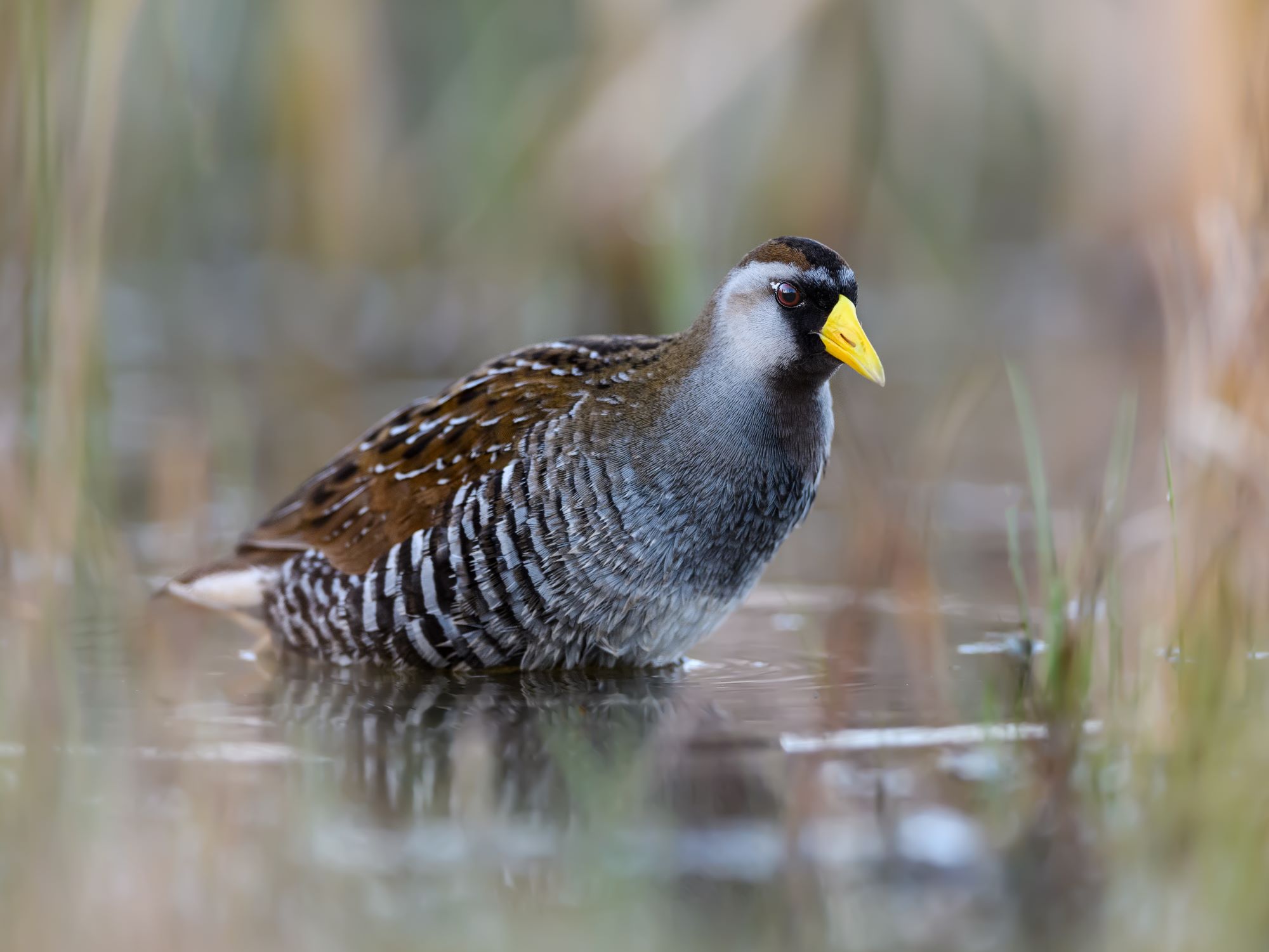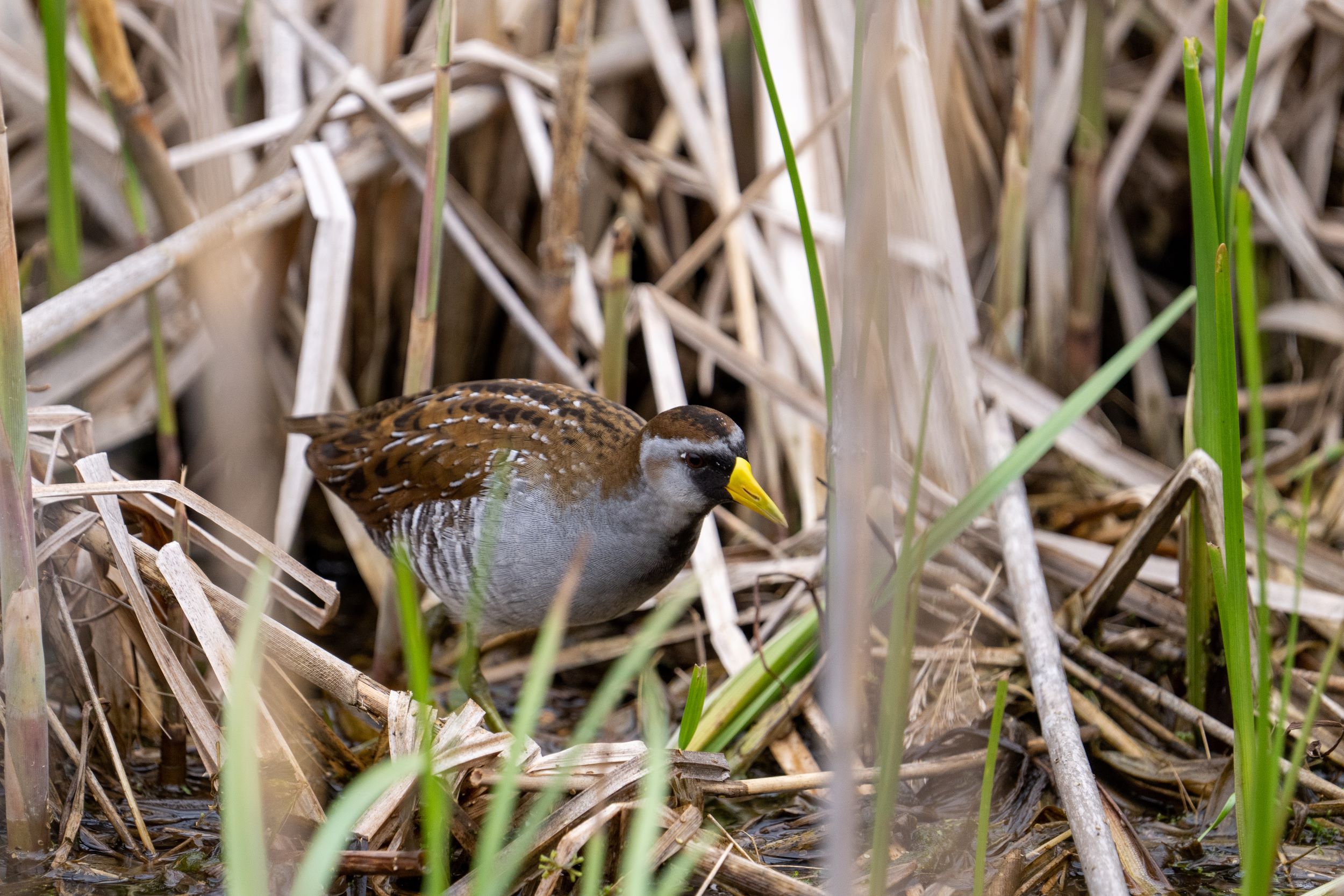
The Sora
Soras, known scientifically as Porzana carolina, are small, secretive marsh birds that are part of the rail family. In Utah, these birds are known for their elusive nature, often heard but rarely seen, making them a fascinating subject for birdwatchers and nature enthusiasts. Their presence in the state’s wetlands adds a layer of intrigue and diversity to Utah's rich birdlife.
Physically, Soras are distinguishable by their short, yellow bills, and striking black facial markings that contrast with their gray heads. Their bodies are predominantly brown with white speckling, which provides excellent camouflage in their marshy habitats. They have relatively short wings, reflecting their lifestyle more geared towards walking through dense vegetation than long-distance flying. Despite their small size, Soras are known for their loud and distinctive calls, which often include a high-pitched whinny and a sharp "ker-wee" sound. These vocalizations are most commonly heard during the breeding season and are a primary means of detecting these otherwise hidden birds.

In Utah, Soras are typically found in freshwater marshes and wetlands, where there is an abundance of dense vegetation like cattails and reeds. These habitats provide them with food and cover. Soras are omnivorous and their diet includes seeds, insects, and small aquatic invertebrates. They are adept at foraging in muddy waters and among floating vegetation, using their long toes to navigate and balance on unstable surfaces.
The best time to observe Soras in Utah is during the spring and early summer, aligning with their breeding season when they are more vocal and active. One of the prime locations for spotting Soras is the Great Salt Lake wetlands, including the Farmington Bay Waterfowl Management Area and the Bear River Migratory Bird Refuge. These areas offer the ideal conditions of shallow water and abundant vegetation that Soras prefer for breeding and feeding. Birdwatchers aiming to spot Soras should focus on listening for their calls, as these birds are often more easily heard than seen due to their elusive nature and excellent camouflage.
Soras are intriguing not only for their secretive behavior but also for their migration patterns. While some Soras are year-round residents in parts of the United States, many migrate to Central and South America during the winter. Their migration is somewhat mysterious, as they tend to travel solo and at night, making their migratory habits less understood than those of more conspicuous birds. The presence of Soras in Utah's wetlands is a testament to the quality and health of these ecosystems, as these birds require specific conditions to thrive.
In summary, Soras are a small but significant part of Utah's bird population, offering birdwatchers and nature lovers a unique challenge in observation. Their distinct calls, secretive behavior, and preference for dense marsh habitats make them an intriguing species to study and observe. For those interested in the diverse avian life of Utah, the pursuit of spotting a Sora, whether by patiently waiting in a wetland area or keenly listening for their calls, can be a rewarding and educational experience. The presence of Soras in Utah highlights the importance of preserving and maintaining healthy wetland ecosystems for the survival of this and many other species.